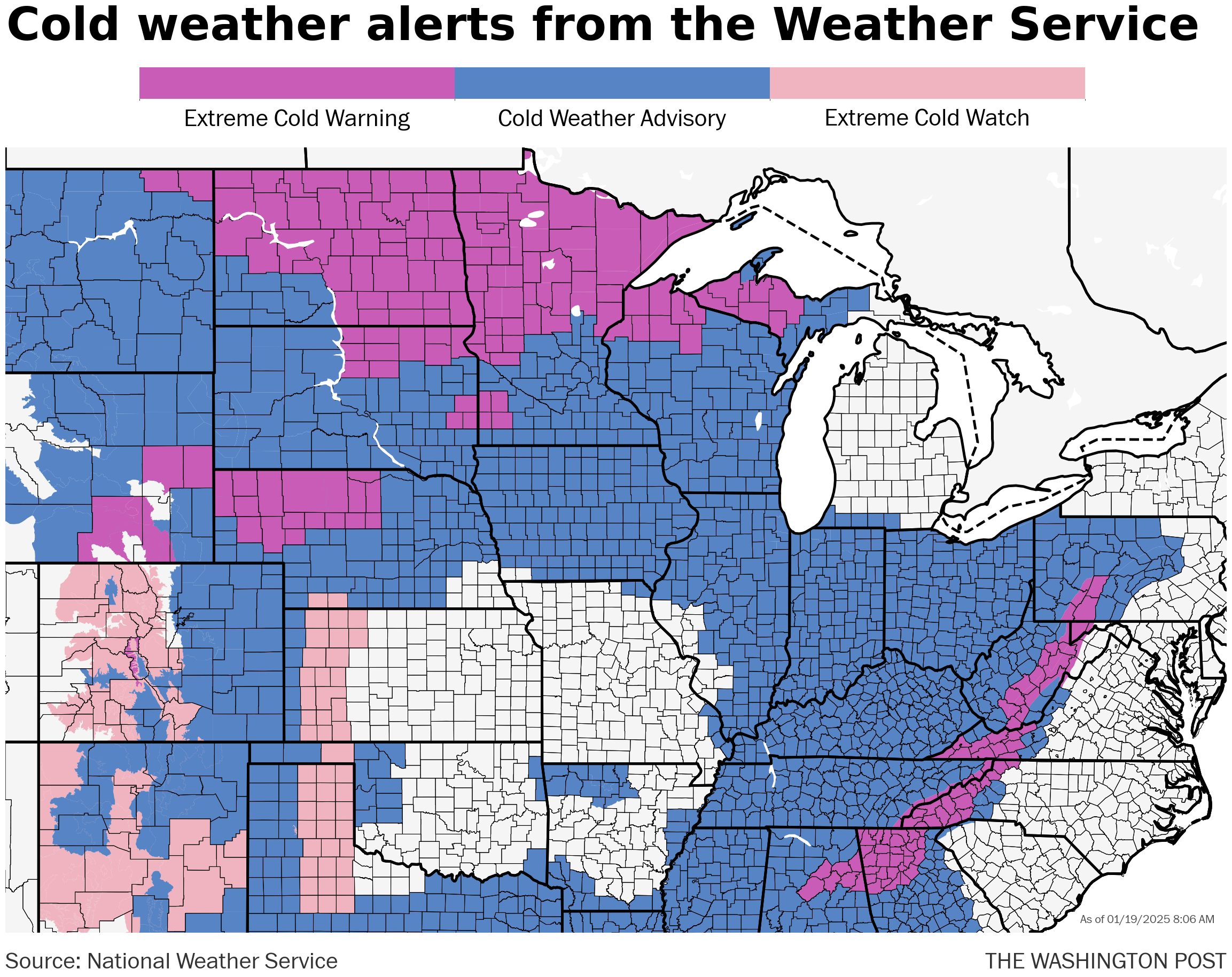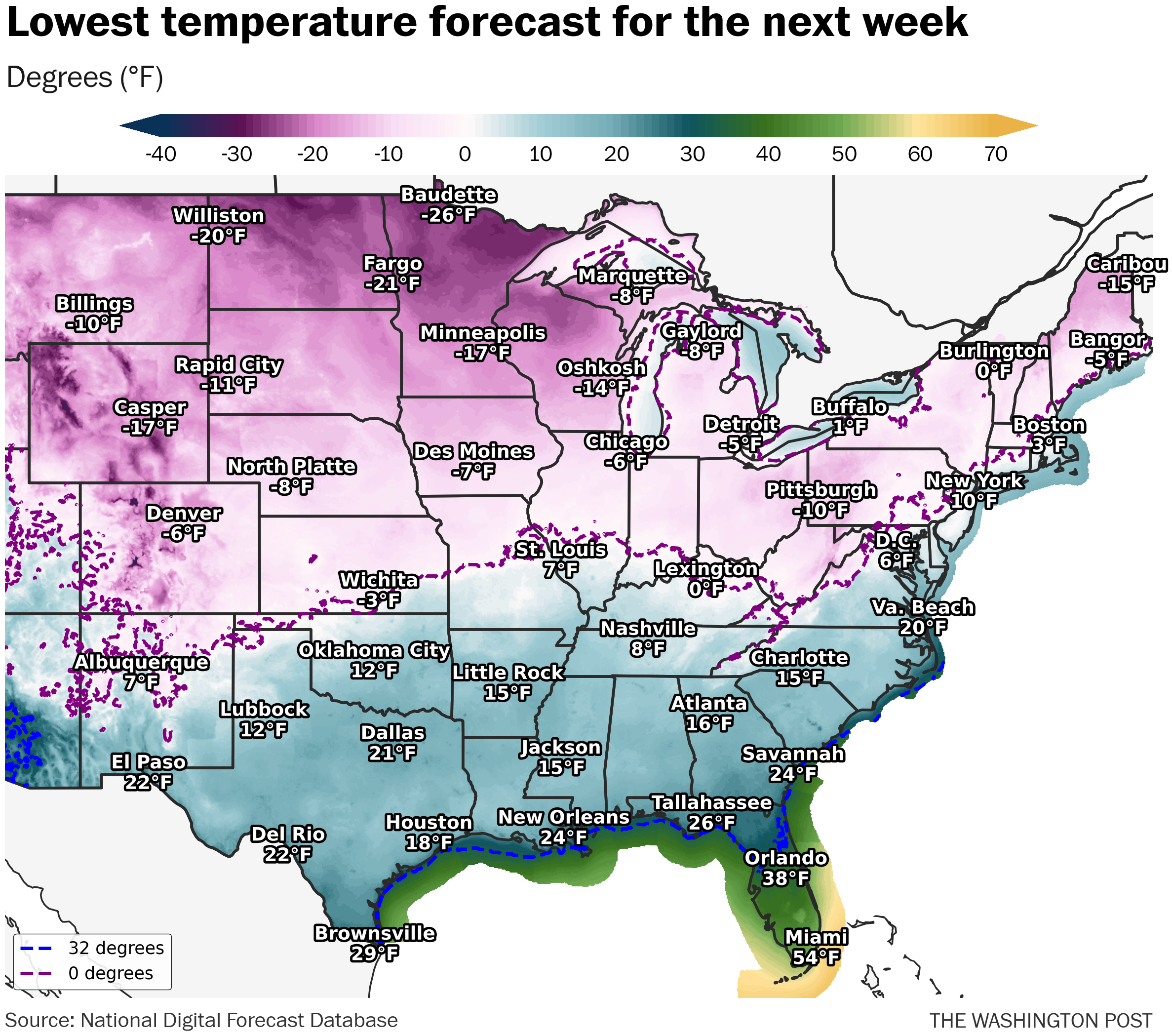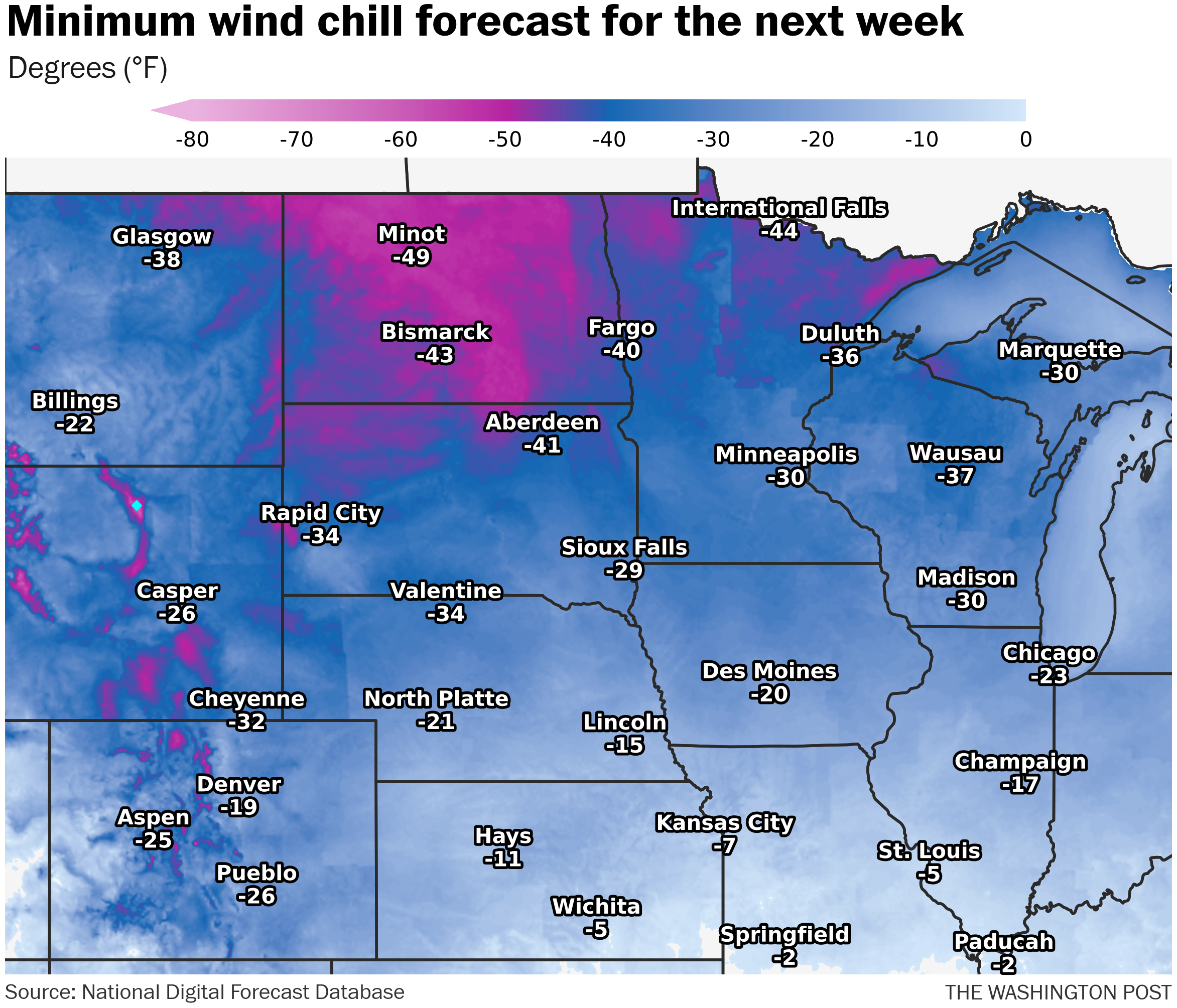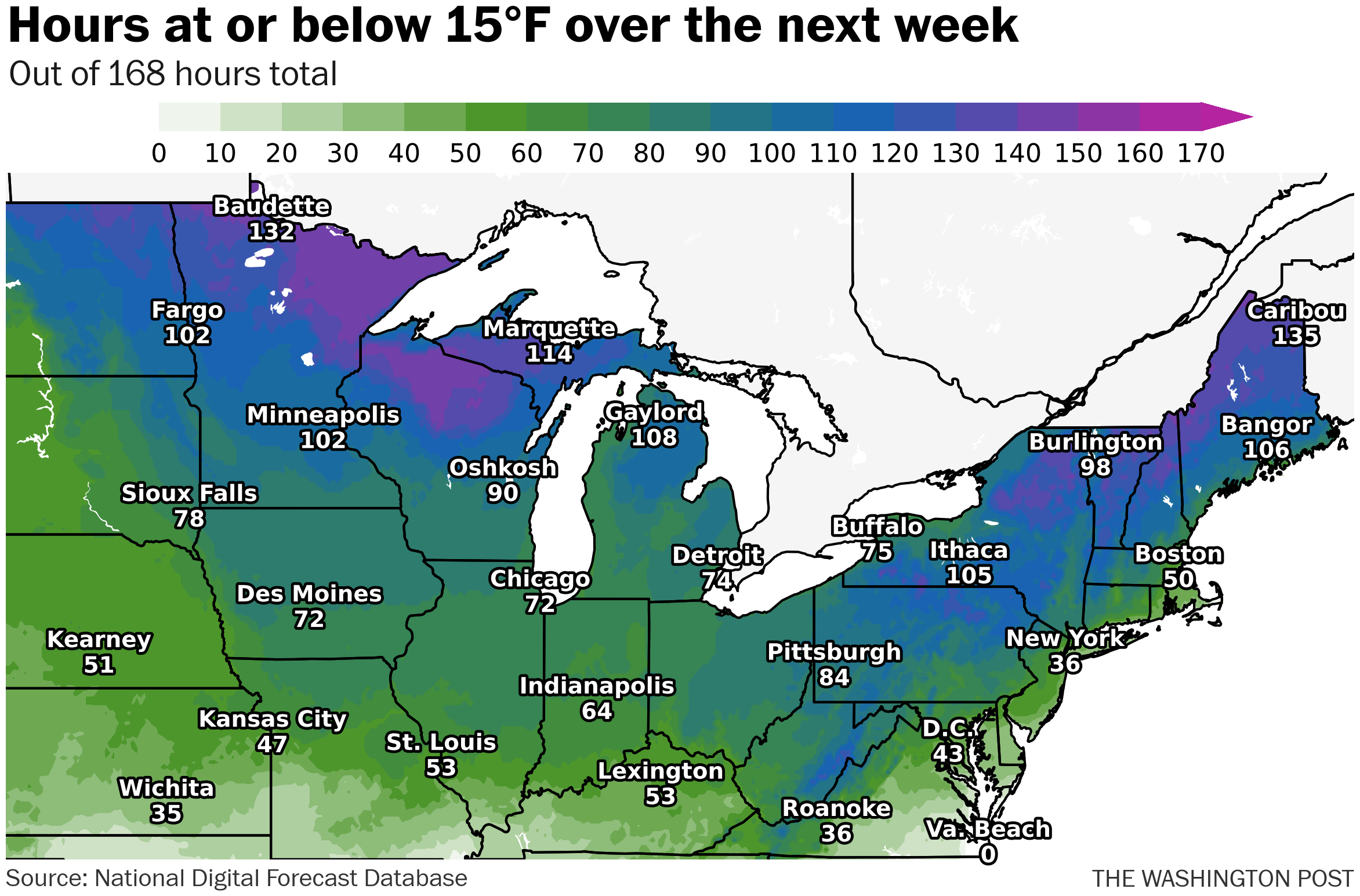4 maps show where cold in U.S. will be most dangerous in coming days

Bitter cold air from winter will move into the eastern two-thirds of the United States by the end of Sunday. Many areas will see very cold temperatures.
Warnings for extremely cold temperatures are currently in place for about half the U.S. population, stretching from the northern Midwest to the Gulf states and from the Rocky Mountains to the Southeast.
Temperatures below freezing will cover the entire country, except South Florida, and combine with strong winds, making the cold feel extremely harsh. Extremely cold temperatures, especially when combined with brutal winds, can lead to a high risk of hypothermia and frostbite for people spending time outdoors. Exposed pipes may freeze or burst due to low temperatures, which can disrupt the power grid. The extreme cold will persist in the region until the middle of the week.
Alerts for cold widespread
Approximately 150 million individuals reside in regions under cold weather alerts issued by the National Weather Service. There are 16 states with areas under extreme cold warnings, six under extreme cold watches, and 33 states included in a cold weather advisory, spanning from the northern Plains to the Gulf of Mexico and toward the East Coast.

Severe cold warnings are in effect for a significant portion of the northern Midwest and Plains, and also around Atlanta, along with the higher elevations in the Appalachian Mountains.
“This poses a life-threatening risk of severe cold injury and frostbite to exposed body parts.”
Running from western North Carolina to New England.
Brutal temperatures
Temperatures that drop to zero - and in some cases, below zero, according to Weather Service predictions - will blanket the northern half of the Lower 48 states as the winter weather outbreak reaches its height.

Temperatures were as low as minus 30 degrees in a few areas.
Here are a few cities and their expected lowest temperatures for the coming days:
- Near the San Juan Mountains in Colorado, temperatures are a minus 46 degrees, which would be the lowest winter temperature so far in the continental United States, with current temperatures at minus 33 degrees.
- Minneapolis: minus 17 (would be coldest since January 2022).
- Pittsburgh: minus-10 (coldest since February 2015).
- Denver: reached a temperature of 6 degrees Fahrenheit below zero (coldest since Saturday, or January 20th).
- Chicago: minus-6 (coldest since January 5th, 2024).
- New York City: 10 degrees, (coldest since February 2023).
- Washington, D.C.: 6 (the lowest temperature since February 2015).
early in the week.
Dangerous wind chills
It's not the coldest or windiest air mass on record – the gusts are mostly between 20 and 35 mph. However, due to the widespread temperatures around and below zero, it doesn't take much to make it cold and hazardous to be outside.

Parts of North Dakota are likely to feel as chilly as minus-50 degrees when wind factors are considered on Sunday night and Monday, similar conditions are forecast for areas of South Dakota, Wyoming, Minnesota, Wisconsin, and Michigan.
Some of the teeth-chattering cold wind chill forecasts include:
- Near the Big Horn Mountains, Wyoming: below 69 degrees Fahrenheit.
- Minot, North Dakota: minus-49.
- Cheyenne, Wyoming: minus-32.
- Minneapolis: minus-30.
- Chicago: minus-23.
It should make it to near -5.
Temperatures below zero will be felt as far south as Texas, Arkansas, northern Alabama and Georgia, and will reach as far north as the Washington D.C. region up the Appalachian Mountains.
Time at or below 15 degrees Celsius.
The area will experience an extended period of freezing temperatures, with extremely cold conditions expected to persist for several days. Over the next week, here’s a breakdown of the total number of hours at or below 15 degrees.

These areas are accustomed to long periods of cold temperatures. However, even in the most familiar places, prolonged exposure to cold can greatly exacerbate the risks and affect those who are particularly susceptible the most.
.
Temperatures from as low as North Dakota to the western Great Lakes area will remain below freezing for two to four consecutive days. By Sunday morning, this area had already experienced between 10 to 25 hours of extremely cold conditions, and that trend is expected to continue.
Posting Komentar